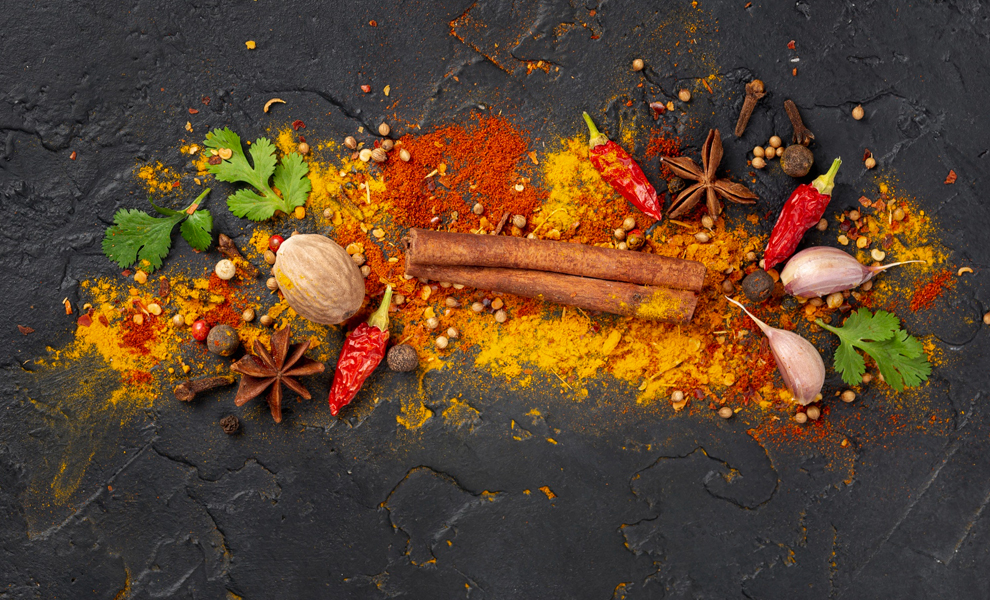
Creating Chaat Masala involves a meticulous process of blending a diverse array of spices and herbs to achieve the distinctively tangy, spicy, and savory flavor profile that characterizes this quintessential Indian spice blend used in various street foods and snacks, known as chaat. Here’s an expanded and detailed process:
1. Selection of Ingredients:
Spices: The core spices include cumin seeds, coriander seeds, black pepper, and ajwain (carom seeds), which contribute to the earthy and aromatic base of the masala. Additionally, red chili powder adds heat, while amchur (dried mango powder) lends a tart and tangy flavor.
Herbs: Dried mint leaves (pudina) provide a refreshing and cooling element, enhancing the overall sensory experience. Some variations may include dried ginger powder for warmth and asafoetida (hing) for its unique umami flavor.
Additional Ingredients: Black salt (kala namak) adds a distinctive saline note, crucial for the characteristic chaat flavor. Other optional ingredients like fennel seeds or ground nutmeg may be used for added complexity.
2. Cleaning and Preparation:
Ensure that all spices and herbs are thoroughly cleaned and inspected to remove any impurities or foreign matter.
Toast whole spices such as cumin, coriander, and ajwain lightly in a dry skillet to awaken their flavors and enhance their aromatic qualities before grinding.
3. Grinding or Blending:
Grind the toasted spices along with the other ingredients into a fine powder using a spice grinder or blender. It’s important to achieve a uniform consistency to ensure even distribution of flavors in the final masala.
4. Mixing and Homogenization:
Transfer the ground spices into a mixing bowl and thoroughly combine them to ensure that all components are evenly distributed. This step helps in achieving a balanced flavor profile where each spice complements the others harmoniously.
5. Testing and Adjustments:
Conduct taste tests to evaluate the flavor profile of the chaat masala. Adjust the proportions of spices if necessary to achieve the desired balance of tanginess, spiciness, and saltiness that are characteristic of authentic chaat masala.
6. Packaging Preparation:
Prepare clean and sanitized packaging materials such as airtight jars, pouches, or containers that are suitable for storing spices. Proper packaging helps in preserving the freshness and aroma of the masala.
7. Filling and Sealing:
Fill the prepared chaat masala into the packaging containers using precise filling equipment to ensure accurate measurements. It’s important to minimize exposure to air during this process to maintain the quality and shelf life of the masala.
Seal the containers securely to prevent moisture ingress and to preserve the aromatic compounds and flavors of the spice blend.
8. Labeling and Coding:
Label each container with essential information including the name of the spice blend (e.g., "Chaat Masala"), list of ingredients, nutritional facts, batch number, manufacturing date, and expiry date. Ensure compliance with labeling regulations and include traceability features such as barcodes or QR codes.
9. Quality Control Checks:
Implement stringent quality control measures to ensure the integrity and consistency of the chaat masala. Conduct visual inspections and sensory evaluations to verify that the spice blend meets the company’s standards for flavor, aroma, and appearance.
Adhere to food safety guidelines and regulations throughout the production process to ensure consumer safety and satisfaction.
10. Storage and Distribution:
Store the packaged chaat masala in a cool, dry place away from direct sunlight and heat sources to maintain its freshness and potency. Proper storage conditions help in preserving the volatile oils and flavors of the spices.
Establish efficient distribution channels to ensure timely delivery of the chaat masala to retailers, wholesalers, or directly to consumers while maintaining product quality and integrity.
11. Cleaning and Maintenance:
Maintain strict cleanliness and hygiene practices in the production facility, including regular cleaning and sanitization of equipment and work areas. This helps in preventing cross-contamination and ensuring the purity of the chaat masala.
Conduct routine maintenance of grinding and blending equipment to optimize performance and reliability, ensuring consistent quality in every batch of chaat masala produced.
By following these detailed steps meticulously, manufacturers can produce High-Quality Chaat Masala that captures the authentic flavors and aromas essential for enhancing a wide range of Indian street foods and snacks. This process ensures that consumers can enjoy the distinctive taste of chaat masala with its tangy, spicy, and savory notes, adding an irresistible flavor dimension to their culinary creations.

 Spices
Spices




